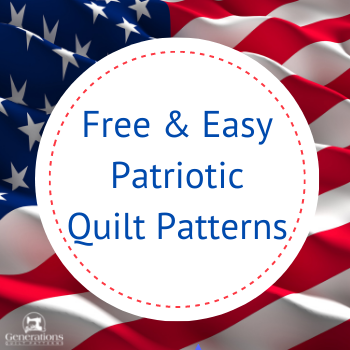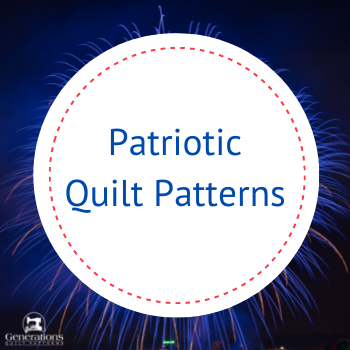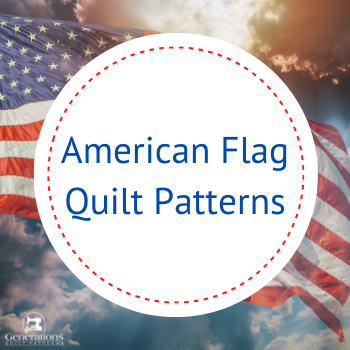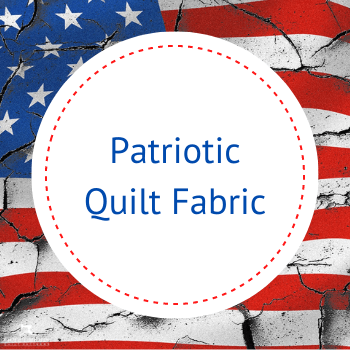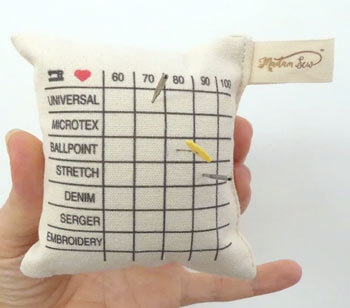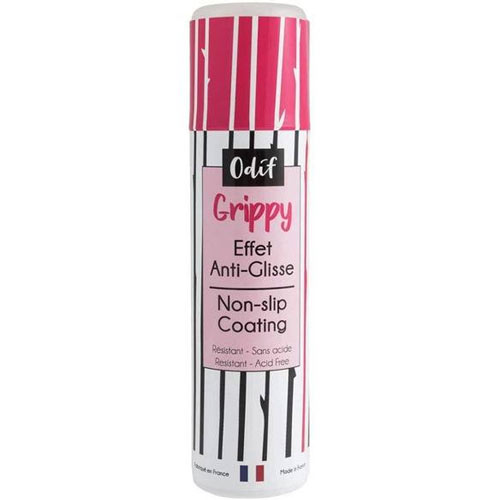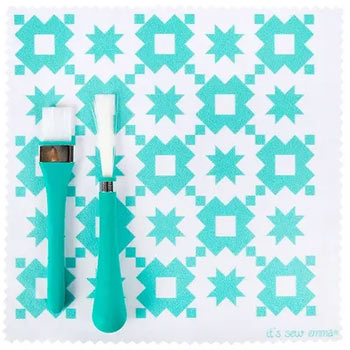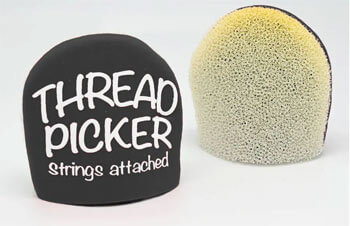- Home
- Machine Quilting 101
- Sewing Machine Needle
Your Sewing Machine Needle
Beginning Machine Quilting 101 continues...
This post contains affiliate links, for which I receive compensation.
The lowly sewing machine needle has a big effect on your stitches.
Avoid problems with your machine quilting by learning to choose the correct needle.
Many books and classes recommend a 90/14 Top Stitching needle for machine quilting.
The rationale is this size needle has a bigger eye and makes a bigger hole thus causing less friction or stress on the thread as it passes through your quilt while sewing.
The problem is, for most threads, this needle leaves a wickedly big hole in your patchwork.
Not pretty.
What's a quilter to do?
Choosing A Sewing Machine Needle
For a beginning quilter, a Universal 80/12 needle works just fine.
These needles are readily available in your local quilt store or big box stores like Joann's.
The eye of this sewing machine needle is big enough to accommodate the recommended 50 wt cotton thread on your supply list and small enough to do a decent job with the recommended monofilament threads.
After you have quilted for awhile...
Then it's your turn to choose
Choose your thread first.
Then choose your sewing machine needle as follows.
Needle Eye
A good rule of thumb is that the needle eye should be roughly 2 to 3 times larger than the thread used.
It makes a hole large enough for the thread to pass through the layers of your quilt, without leaving an unsightly hole the thread won't fill.
You can “eyeball” how big the needle eye is compared to the thread.
Needle Point
The needle point should be shaped and sharp enough to pass through the fabric without undue stress while sewing.
For the purposes of this lesson, the Universal needle is sharp enough for most fabrics.
However, for a fabric with a high thread count like a batik, pima cotton or cotton sateen, my recommendation is to use a Schmetz Microtex Sharp Size 80/12.
Needle Groove
There's a groove down the front of the needle.
Use your fingernail.
Feel it?
Its purpose is to cradle the thread as the thread slides back and forth through the fabric until a stitch is made. On a general sewing machine needle like the Universal, this groove is shallow.
On specialty needles, like the Metallic or Metafil which are intended for use with metallic threads, the groove is much deeper.
This groove protects, or babies, the thread as it passes through the fabric.
The groove on a topstitching needle is also deeper. This makes sense when you think about it. If you're topstitching, you pretty much want that stitching to show. If you want it to show, you're probably using something special. Something shiny or glitzy to say, "HEY! Look at this!"
Needle Size
The sewing needle size marked on the package refers to the size of the needle shaft.
Needles in the US are marked 60/8, 70/10, 75/11, 80/12 and so on. The larger the number, the thicker and stronger the shaft.
The shaft should be strong enough and thick enough that you are not breaking or bending needles as you free motion quilt.
The 80/12 size is appropriate for beginners.
General Guidelines for Sewing Machine Needles
- New project? Start with a new sewing needle.
- Needle is fresh out of the package? That doesn't mean it is perfect. Sometimes they're not. Change to another new needle if nothing seems to be working.
- Hit a pin? Change your needle. A damaged point affects the quality of your stitches.
- Using many different threads in a project? Be prepared to use different types and sizes of needles to match the needle to the thread.
- Don't be penny-wise and pound foolish! Sewing machine needles are cheap! More often than not they are the cause of your problems. Keep plenty on hand.
- Thread breaking? First check that your machine is properly threaded with the thread in the tension guides. Then change to a new needle.
- Breaking needles? Change to a stronger needle like a Jeans/Denim or Topstitching needle in the size appropriate to your thread.
- Bending or breaking sewing machine needles while free motion quilting? Slow your hands down! You're probably moving the sandwich too fast for the rate of the machine. If that doesn't work, switch to a larger needle.
- Needle sounds dull…makes a popping sound while sewing? Change it!
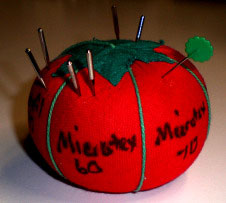
Now to keep all those sewing needles straight use a tomato pin cushion.
Label each “section” of the tomato with 60, 70, 75, 80, 90 or the needle sizes and types you use the most. Put a ball or flower head pin in the section that matches the needle that is in the sewing machine.
Only used needles are in the pin cushion.
New needles remain in their cases. Simple and easy.
Needle little more advice?
Keep an eye out for when sewing machine needles are on sale at the big box stores. My local craft store periodically has sales on its notion wall of up to half off.
When that happens, stock up!
This makes it easier to have the correct needle on hand for the job.
And easier to change to a new needle when it's causing a problem.
Table of Contents
for Beginning Machine Quilting 101
Introduction
Beginning Quilting 101: Quilting Instructions for the Beginner





